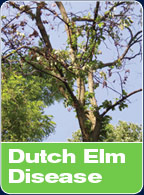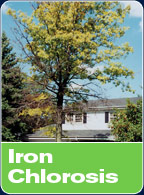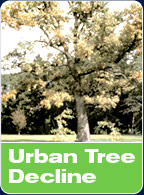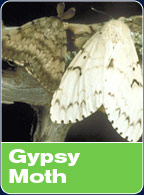Why now?
by Dave Clanton
Fair question: Why does Clanton Tree Company give the impression the sky
is falling on our trees?
Short answer: Suburban Chicago is increasingly being invaded by exotic insects and diseases; the typical residential property is not the most natural place to grow a tree; and all trees don’t have a problem.
The greatest misconception (among many) about growing trees outside the forest is it’s natural and easy. Plant a tree and watch it grow!
Actually, this works well for quite a while because young, often even middle-aged trees can handle tremendous levels of stress induced by the suburban yard. A young transplanted tree loses 95% of its roots when harvested at the nursery but only needs watering the first couple years to survive. Conditions endured so well when young become dramatically more adversarial when older. Analogy to the human body is appropriate and practically endless.
Easier to explain is how international trade has introduced insects and diseases from other continents our native trees can’t resist. Understandably, misconceptions continue, to wit: Everyone knows millions of Elms were wiped out years ago, yet many think Dutch Elm Disease is gone too, and it’s not. Misinformed authorities have misled the public for years about the inability of insecticides to control Emerald Ash Borer, and it’s patently false. Gypsy Moth? That was eradicated by the Illinois Department of Agriculture with aerial spraying--wasn’t it? No, it wasn’t. It’s escalating into a hugely destructive pest in northeast Illinois, especially for older Oaks.
We’re not going to live without trees in our yards and parkways, yet the cost to keep them healthy can seem prohibitive. Replacing susceptible or older trees is often necessary, but I’m 58 years-old and can’t wait for a five-year old transplant to assume the place of a 40 year-old Ash tree that could be saved from Emerald Ash Borer, much less an older and larger tree. To remind one of the expense to remove a large tree is cynical, but real. Pay hundreds of dollars, possibly thousands, and what have you? What will the loss be to the property value? All services offered here will not necessarily be required indefinitely—often biotic disorders can pass or subside.
Besides paying to protect and preserve trees there are two very effective and inexpensive measures that can be taken to alleviate many problems: mulch as much of the ground over the tree’s roots as you have the will to do (the heck with the grass), and water widely and adequately during dry spells. These small efforts will go a long way to bringing some of the forest to your tree and make it healthier and more resistant to many (but not all) of these problems.






